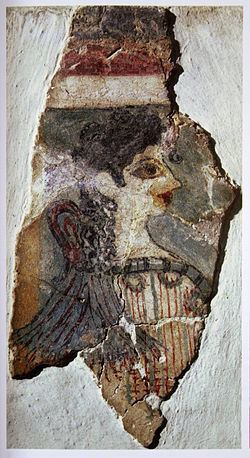Year About 1400 BC | ||
 | ||
Location Heraklion Archaeological Museum Similar Bull‑Leaping fresco, Prince of the Lilies, Warrior Vase, Mask of Agamemnon, Phaistos Disc | ||
Minoan fresco project la parisienne
La Parisienne also known as the Minoan Lady, is part of the Camp Stool Fresco, which was probably painted on the wall of the Sanctuary Hall on the Piano Nobile at the palace of Knossos. The sacral knot worn at the back of the neck seems to indicate that she is a priestess or even a goddess. The archaeological research in Minoan palaces, cemeteries and settlements has brought to light a multitude of objects related to beautification.
It seems that there were beautification areas in the palaces of Knossos, Zakros and Pylos. These beauty objects were used during the whole Aegean Bronze Age. By using these objects, the Minoan ladies highlighted the red lips and the white of the face. In the fresco of the Parisienne, the use of the black colour for emphasizing the form of the eyes and red for the lips can clearly be seen.
It dates to the Final Palatial Period, ca. 1450-1350/1300 B.C., and is currently in the Herakleion Archaeological Museum.
